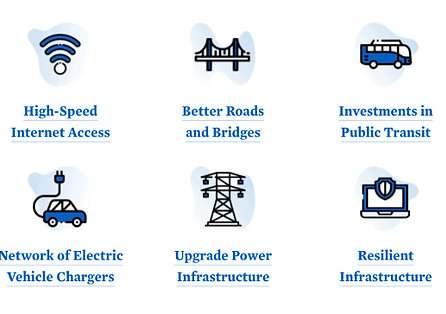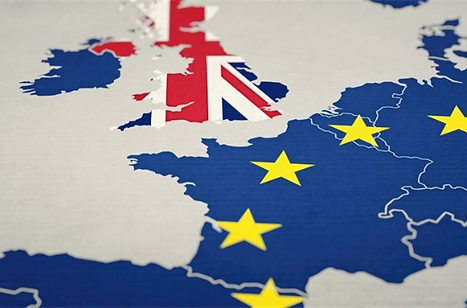
Something Is Not Right With Today’s Activism

Activism is defined as the practice of vigorous action or involvement as a means of achieving political or other kinds of goals. The said vigorous acts can take many forms such as protests, demonstrations, public speech; in shorter words, they can be any act that is done with the intention to make a change. Even though the intentions of the acts are usually positive, sometimes the imperfections of the act may cause trouble. While raising awareness for a cause, putting down other cause(s), or making it seem like that your cause is the only thing that matters is just one aspect of imperfect activism. This sentence brings us to the “WhatAboutism” issue within the many flawed acts.
Whataboutism is the act of counterpart an issue with a sometimes vaguely related, but mostly unrelated issue. “All Lives Matter”, “Straight Pride”, and “Meninism'' are the most popular examples of this behaviour. To summarize, the “All Lives Matter” movement is used by -usually- white people to counter the “Black Lives Matter” movement which intends to raise awareness about the challenges Black people face in society and to abolish the Systemic Racism that lay the ground for said challenges. In a similar manner, “Straight Pride” is used by cisgender straight (heterosexual) people to counterpart “Pride Month” in which the LGBTQ+ community celebrates their identity and sexuality. None of these counter-movements has an intention other than silence and degrades the original movements which include a positive and progressive purpose. Lastly, “Meninism'' or “Men’s Rights” movement is not much different from the other two in the sense of purpose, however, their so-called activism ranges from “men get sexually assaulted too” to “alimony payments are against the men’s rights”. We cannot deny the fact that men getting sexually assaulted too, however, when this argument is presented, the only purpose is to degrade the challenges and oppression women have been facing for centuries. “Alimony payments are against the men’s right” is just absurd and pulling the attention far from the main reason why men are the party who pays the alimony after the divorce in most cases. To remind, the reason for that is the patriarchal system, which discourages and makes it hard for women to join the labour force, hence making the women poorer and the party who needs the alimony payment. All three of the groups I mentioned earlier are too intoxicated with the privilege to realize the real world and its challenges the group they oppose go through. Of course, some people also support these countermovements without essentially having the agenda of undermining the original movements or their supporters, or naively per se. Additionally, and apologetically, I need to add that there are more than two genders, however, the last issue I mentioned is mostly about the marriages between the traditional two genders, men and women, so I had to explain the issue as it is. At this point, we arrive at our next topic: intersectionality.
Intersectionality is one of the most important elements of modern activism, the overlapping nature of the discrimination and classification in the society requires the action against this discrimination to be overlapping too, hence intersectional. To identify these overlapping issues, we can count gender, race, ethnicity, bodily and mental disabilities, sexuality, and gender identity. Lacking intersectionality and advocating only one aspect of the problem while you act, may cause some limitations to your action, especially in an online environment where everyone has access to everything and the audacity to state their opinions on every issue. Feminism and Queer advocacy are certainly intertwined movements today, even these groups have smaller groups with toxic traits within the communities. For instance, the “LGB” movement which excludes any other sexual orientations or gender identities other than lesbian, gay, and bisexual; (un)intentional women and non-binary exclusion by cisgender gay men, and the most harmful one to both Feminism and Queer advocacy: Trans-exclusionary Radical Feminists (TERFs). All three of the mentioned groups are influenced in some way or another by the traditional gender norms, hence they tend to exclude Transgender people during their “activism”. While acting against the traditional norms should be the main strategy of said groups, their act reproduces the harmful expectations and norms of the society, hence contradicting their own goals. The lack of intersectionality in Feminist and Queer advocacy does not end with Transgender exclusivity, “White Feminism” often ignores the struggles Women of Color faces all around the world and the voices of Queer Black, Indigenous, and People of Color (BIPOC) go unheard frequently. Similar to internalized transphobia, even the most “woke” people may have internalized racism and it is very easy to spot. Seeing the diversity in media as unnecessary, not sharing their platform with BIPOC, and degrading the BIPOC’s stories by declaring their journey the same are some of the red-flagged behaviour. Even though we have to agree that every person’s journey is unique and their struggles are valid, ignoring the existence of racially oppressive social structures will not help any of their advocacy. Enough about the insider toxicity, it is time we mention the outsider villain of the Queer advocacy: Rainbow Capitalism.
Every year, the month of June is when all the brands wrap themselves in rainbow colours in order to celebrate Pride Month by posting “Happy Pride”, launching whatever their product is in rainbow colours, and changing their social media icons into the rainbow-coloured version of their brand logo. Shamelessly, they are doing all this work, “raising awareness”, and celebrating with the LGBTQ+ Community while they implement homophobic and transphobic corporate policies, not employing “visibly Queer” workers, etc. The hypocrisy of profiting off of the rainbow-coloured products and continuing to be homophobic and transphobic is extremely suitable for capitalist corporates. As the accustomed corporal behaviour, creating a false media perspective and profiting off of it has been seen in the climate-destroying sectors either.
Greenwashing is corporates presenting policies, projects, or products that are “environmentally friendly” and profiting off of them whilst continuing to harm the environment on a much larger scale. An international fast-food company that is known for their excessive rain forest destruction and beef production adding a vegan burger to their menu, or international oil companies advertising about renewable energy and climate change are some of the examples of greenwashing in the media. Indeed, the contribution of the international corporations in finding a solution for climate crisis is a necessity, and demanding those changes is up to us; however them advertising like they are solving the climate crisis, while their production policies are practically the same and harmful to the environment on the same level as before, is the hypocrisy itself. As the consumers of both the product and the advertisement, we are the ones who will call out their deception and demand actual change in their actions.
We cannot write about activism without mentioning the limited activism called “Not in my backyard”. When people are protesting about a specific environmental issue, the people living where the protested act is happening, tend to protest just because the results of that issue will affect them personally. The same group of people also tend to not care about (as strongly if at all) when a similar environmental issue occurs somewhere else, which makes their activism limited to their own interest. This limitation is not a completely negative thing, even though they are acting according to their own interest, they are still protesting against damaging nature. Obviously, this does not mean that every person protesting against an environmental issue near where they live is protesting because of their own interest, the group protesting a local environmental issue most probably includes people who are concerned about environmental issues globally. We can look at the bright side of it and say “well, at least, they are doing something positive for the environment”, and we should entertain the possibility of them learning more about the environmental issues globally by protesting/learning about that local issue.
In 2020, there are many platforms to act on and way more issues to act about. However, the positive intention of the act may not be adequate to accomplish the goals in some cases; inclusivity, intersectionality, universality, and accurately educated moves are the right way to make your voice heard at all times. Listening to one another, accepting our mistakes, and being open to change is what will make today’s activism efficient and effective.






